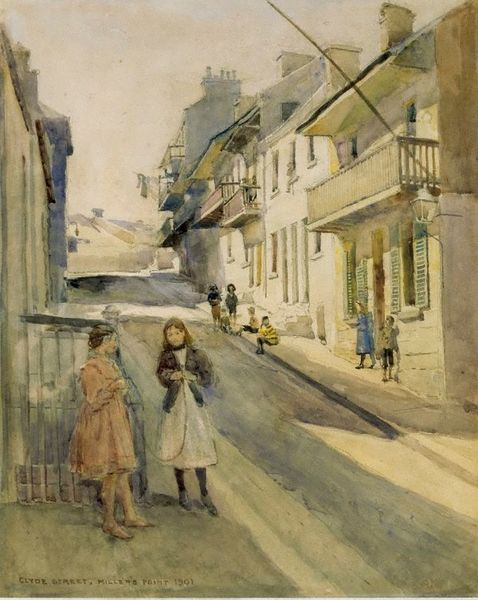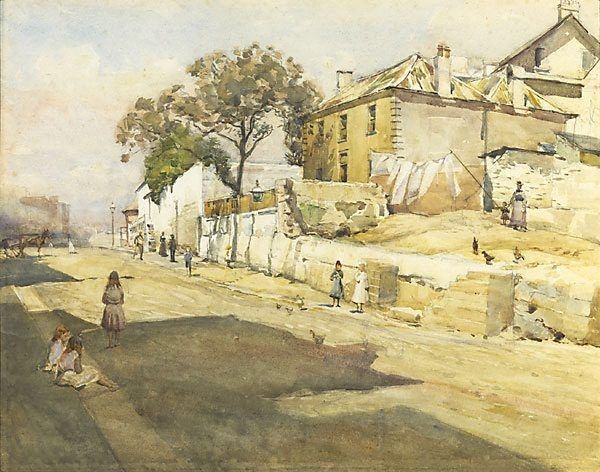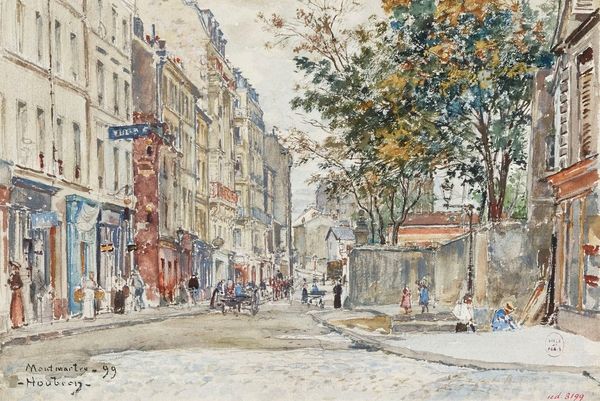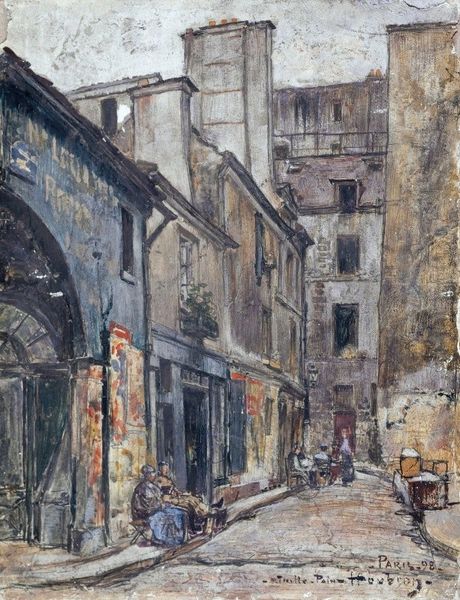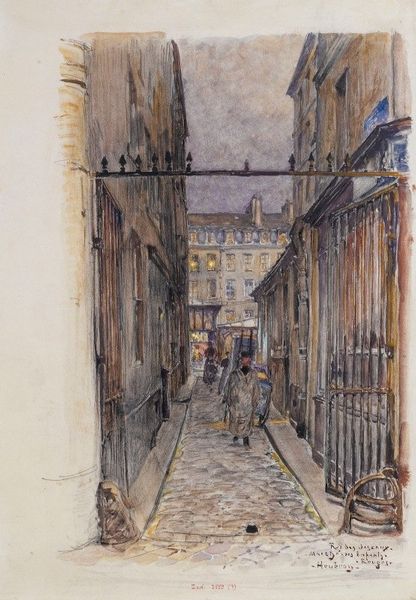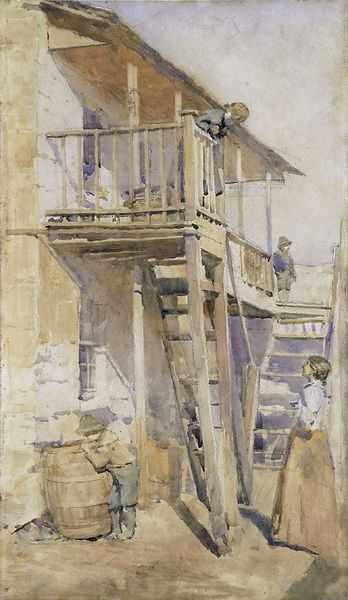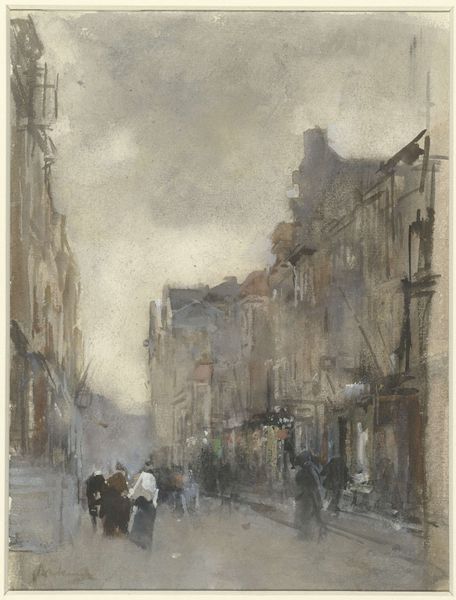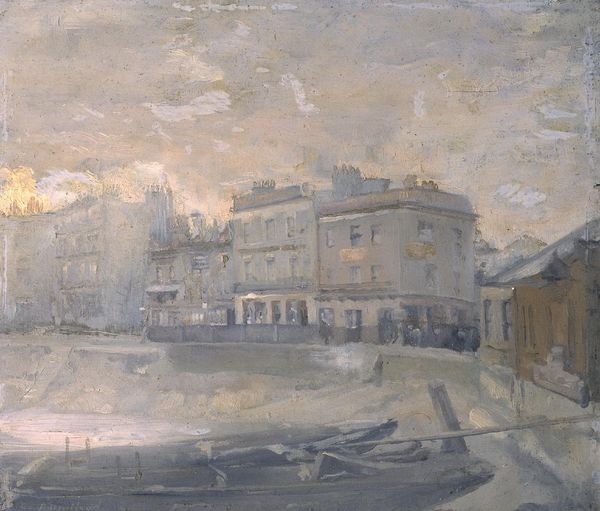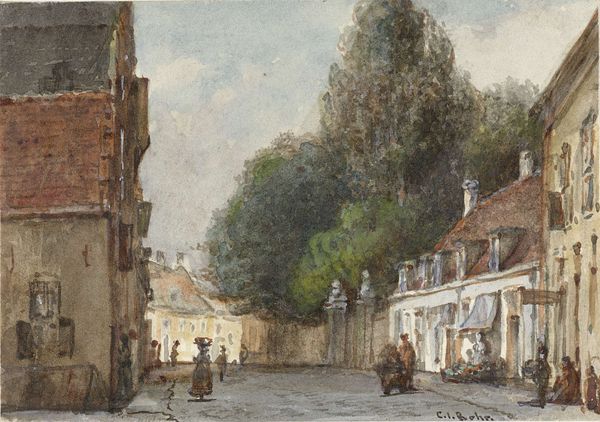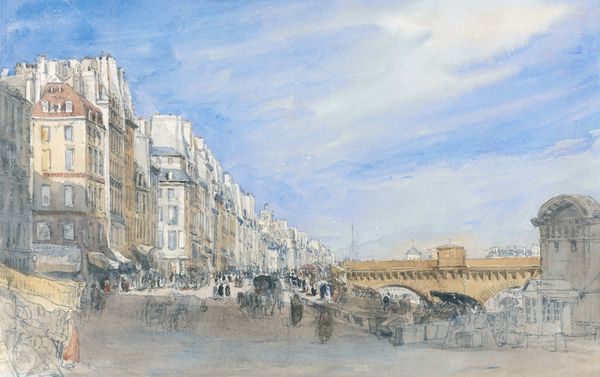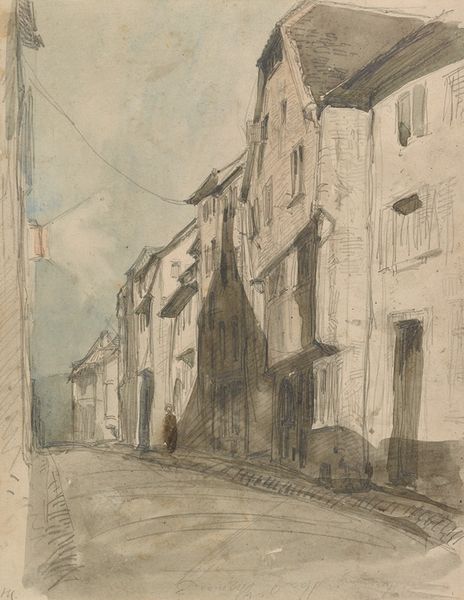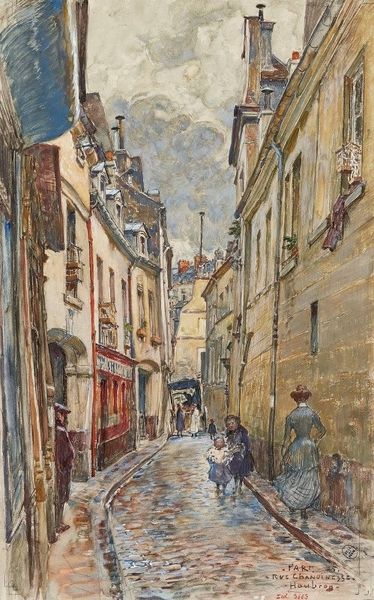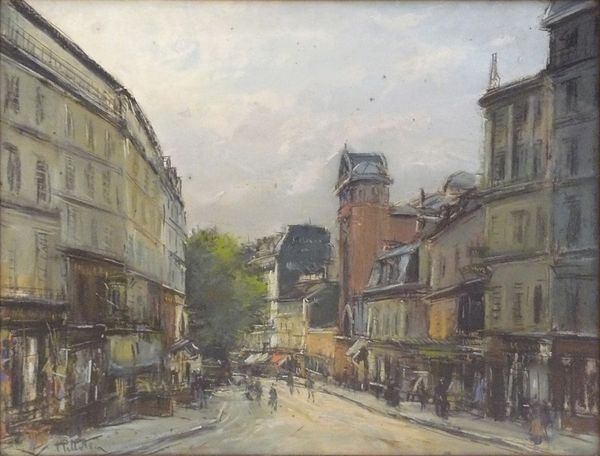
Copyright: Public domain
Editor: So, here we have Julian Ashton’s “Cambridge St., looking towards the Argyle Cut” from 1901. It looks like a watercolour painting of a working-class street scene. It strikes me as a really intimate look into everyday life. What do you see in this piece, beyond the surface? Curator: It's tempting to see it just as a picturesque slice of life, isn't it? But look closer at the Argyle Cut itself. That was literally carved out of the rock by convict labour, shaping the very landscape of social division. Do you think Ashton is consciously acknowledging this history? Or perhaps normalising it through this tranquil depiction? Editor: I hadn't thought about that at all! It feels like the hard labour is absent here. Is Ashton, through his impressionistic style, perhaps obscuring the harsh realities? Curator: Precisely. The soft brushstrokes and muted palette might serve to sanitize a more complex and troubling narrative. We must consider the artist’s position, depicting a landscape fundamentally shaped by exploitation and power imbalances. What purpose does that serve? Whose gaze is prioritized here? Editor: So, beyond the appealing style, there's this implied social commentary or perhaps even a kind of… complicity? I guess it is more layered than I initially thought. Curator: It is precisely this tension that makes the painting so compelling. It reflects the way societal memory can be both present and deliberately obscured. Considering whose stories are being told, and whose are absent, offers a far richer reading. Editor: Wow, I'll definitely be thinking about this painting – and others – differently now. Curator: As will I. It is rewarding to unpack these intersections of history, power, and artistic representation.
Comments
No comments
Be the first to comment and join the conversation on the ultimate creative platform.
